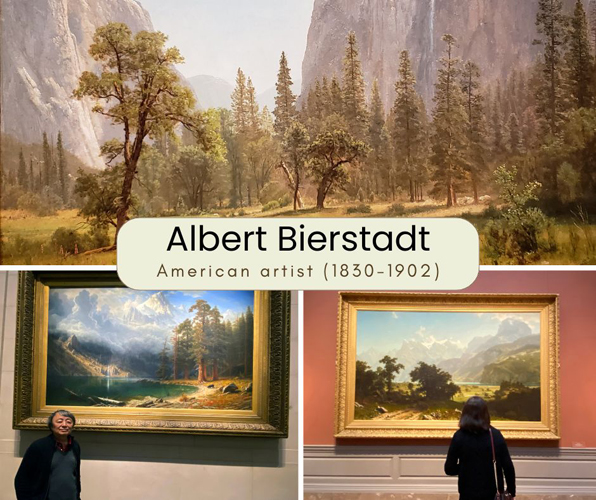Every time we see the paintings of Albert Bierstadt (January 7, 1830 - February 18, 1902), we feel a deep sense of wonder. There is something in his works that profoundly resonates with viewers, especially artists like us. His paintings evoke admiration for the grandeur of nature, a feeling that transcends time and remains universally relatable.
Bierstadt was born in Germany and later immigrated to the United States. He traveled widely, creating artworks in various countries, but he is best known for his depictions of American landscapes, particularly the Rocky Mountains, Yosemite Valley, and the vast plains of the West. His works are characterized by their monumental scale, which reflects the majesty of the natural world; his masterful use of light and shadow, which gives his scenes a luminous, almost ethereal quality; and his meticulous attention to detail, capturing the intricacies of trees, mountains, and rivers with astonishing precision.
What makes Bierstadt’s art especially significant is his ability to observe and represent nature while infusing his works with imagination and idealism. He didn’t merely record what he saw; he elevated the landscapes through artistic interpretation, emphasizing their beauty and harmony. This blend of observation and creativity is what makes his paintings so impactful—they allow us to experience the natural world not just as it is, but as it could be in its most perfect form. Through Bierstadt’s art, we are reminded of the power of nature and the vision of the artist to reveal its magnificence.
Artworks and gallery views include the following paintings by Albert Bierstadt:
Bridal Veil Falls, Yosemite Valley, California (1871-1873), oil on paper mounted on canvas. Cincinnati Art Museum.
Mount Corcoran (c. 1876-1877), oil on canvas. National Gallery of Art.
Lake Lucerne (1858), oil on canvas. National Gallery of Art.
![]() Read More Featured Art Articles
Read More Featured Art Articles
Subscribe to our monthly e-Newsletter and stay updated with exhibitions and events!
604 Main Street, Zanesville, OH 43701
